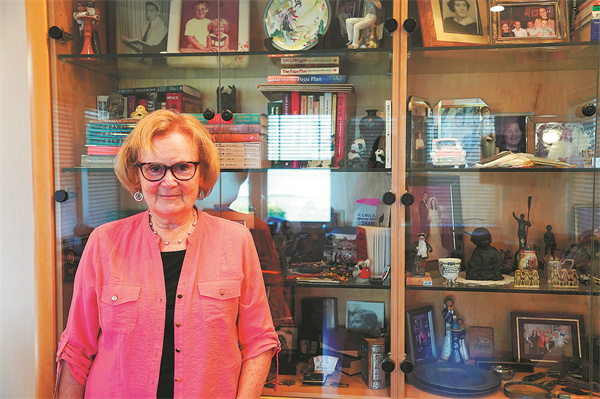

Recreating life
In the war-torn Hongkew district, Jewish refugees started establishing small businesses and set themselves up as doctors and teachers. People wanted to recreate what they were doing back home, Kracko said.
Gradually, a Jewish area inside Hongkew came to be known as "Little Vienna" for its European-style cafes, delicatessens, nightclubs, shops and bakeries. Kracko's mother worked in a German bakery there.
Material conditions were austere in the Jewish ghetto. On Kracko's first birthday, her grandfather baked a cake. She had no idea where he got the flour. The eggs and strawberry jam were from neighbors. The cake was taken to the bakery, where Kracko's mom worked, to be baked.
Those memories were so deeply rooted in the family that many years after the war, when life had improved, Kracko's aunt would still stop people from throwing out used tea bags and would steep them repeatedly to make tea until the bags were no longer useful.
Kracko, now 77, has short, light, blonde hair. She was wearing a pink shirt and silver earrings during an interview with China Daily in her house by the sea in Westchester County, New York.
She is quite familiar with modern technology and uses an iPhone well. During the day, Kracko's phone was full of family messages. The great-grandmother was preparing for Rosh Hashanah, the Jewish New Year, which was only a week away.
When asked about her place of birth, Kracko's husband would often quip, "You'd never guess where she was born."
Ellen would respond, "I was born in 1947 in Shanghai after World War II."
People would then look wide-eyed and ask, "How?"
It has been estimated that around World War II, more than 400 Jewish babies were born in Shanghai and were called "Shanghai Babies". Kracko is one of them.
Chinese, Japanese, Indians and other refugees from Germany and Austria lived in Hongkew. Shanghai at that time witnessed 1,000 monthly refugee arrivals, and Hongkew residents faced dire conditions since the start of the full-scale war in China in 1937, according to the Shanghai Jewish Museum.
In a less than 2.6-square-kilometer area, the ghetto was home to some 10,000 native Chinese residents living side by side with thousands of Jewish refugees, the museum said.
The Chaim family lived next to a Chinese family and Kracko's mother would send cookies to the Chinese lady who lived downstairs. The Chinese lady, even though she could not communicate with them, would give her noodles in return.